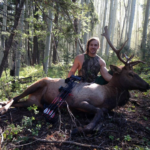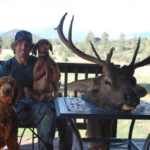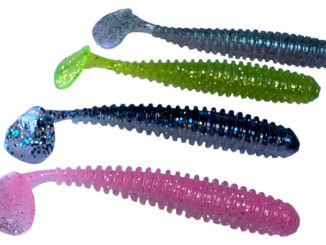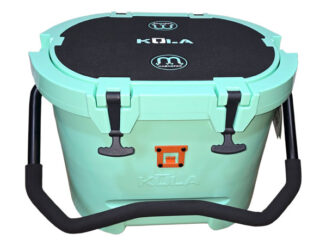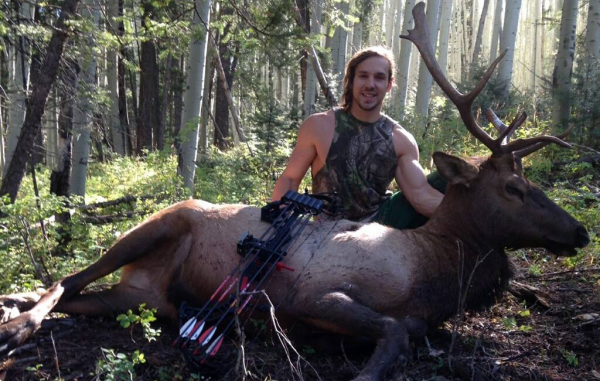
Public land bowhunt yields big bull elk, along with 911 wife hunt
Last year, my wife’s friend told me about the hunting experience of a lifetime: Bowhunting public land elk in Colorado. And an added bonus — since the season is during September, no Louisiana deer hunting would be missed.
He had harvested several elk and would join us with his wife, so last winter Laura and I researched a nice 3-story log cabin in the area and booked a week. But right before the trip, Laura’s hunting couple bailed, but her sister, Sue, still joined us.
So now my experience would be a true DIY mission alone in the Rocky Mountains in Colorado’s seemingly endless national forests.
The long drive wasn’t bad at all, and Laura chipped in for a few hours. Going through Dallas in the middle of the night led to zero traffic for the entire 36-hour round trip.
Be sure to check out my video for rookie mistakes, information on cheap lodging options, giant mule deer footage, part of the 911 rescue and when the stars finally aligned, pointing towards a bull elk!
With no clue where to find elk much less how to hunt them, I went to one of the hunting stores in Pagosa Springs seeking advice. Well, after hiking for 21 miles up those suggested mountains, only cows were seen. But not female elk — actual cattle that ranchers let roam in the mountains.
Apparently, these other hunters had a horse in the race and the suggested spots were complete busts.
Luckily, while shopping for produce at a street corner later in the trip, the owner was a hiker who knew where elk were plentiful but had no intentions of hunting them. After we bought nearly a month’s supply of fruit, he revealed the secret location.
That was one insane hike up to nearly 11,000 feet, but after making it over the mountain peak, I found some swampy wallows on the far side and started seeing mule deer. Suddenly, there was the first elk I ever saw: A bull in velvet just 25 yards away.
However, it was a 2×2 and not legal to shoot. (Legal bulls need to have 4 points on one side or have a longer-than-5-inch brow tine in units by Pagosa Springs.
The next day was rainy, but I knew stalking would be great. What I didn’t know was what happens to mountain roads during flash floods. I hiked 2 ½ hours in the darkness and before long, I saw giant horns, but it wasn’t an elk. Two enormous mule deer were just 30 yards away.
Mule deer can only be harvested if you draw a tag in Colorado’s April draw, but elk tags are unlimited in many units. Colorado has an extremely complex draw and OTC system with over one hundred units and rules for each species in each unit. Expect to study like it’s a college final to hunt out there!
Soon I saw the even more massive antlers of an elk. He ranged at 58 yards, but I couldn’t count the points with the brush. As he walked off, I realized he was legal.
A relentless rain began, so I decided to head back to camp. But I was a little too late: The narrow, rocky dirt road transformed into complete slush, so I slammed my parking break on and waited for the road to dry.
But another hunter drove by and said more rain was coming and the road would get even worse, so we crept our 4x4s out at a staggering half-mil-an-hour pace.
For every split second you’d let off the brake, the truck would fishtail several yards in whichever direction the mountain dictated, rendering the steering wheel almost useless.
The 5-mile trip was the scariest 2 hours and 24 minutes of my life. I had found the elk, but wasn’t interested in any more suicide missions.
So it was time for Plan B.
I hunted the opposite side of the mountain range, and after jumping a few elk noisily walking through the tangled mountain woods, I switched tactics.
I started creeping along the thick brush and bluffs on the downwind side of a loud rushing creek. Suddenly, I saw a big bull elk banging around along the thick cliff’s edge.
Upwind and feeding like a hog in a trough, I let my new PSE Full Throttle unleash when his lungs finally appeared at 29 yards through the baby pines.
Thinking I had made the most of my golden opportunity, the tracking began 2 ½ hours later down a trail painted red. I soon found my bloodied arrow, oddly enough with a broken front tip.
Little did I know a hard fall onto rocks earlier that morning put my pins pointing right.
Finally, two hours into the track, the GPS showed we had covered almost one mile when I started smelling a musky bull. Unfortunately, it wasn’t dead, and he was in cover too thick for a second shot.
I slowly backed off, hoping this tough animal would expire there, but no such luck — he burst off with fury.
After a sleepless night, my wife and I made the two hour voyage back to the end of the blood trail. And in short order, laid up more than a mile from the original shot, was my big beast!
The arrow placement was finally revealed: The elk’s head was turned towards its rear when I released my Ramcat, but my fall knocked the pins and I put the arrow through the neck and into the center of the shoulder. The dinosaur-like thickness of that shoulder kept my broadhead from penetrating deep enough for a quicker track.
Instead, this elk with three large holes, just kept hauling tail until he had absolutely nothing left.
Of course, with my luck, the elk ran opposite of my truck so the backpack meat mission began.
It took all morning to hike out the first load. I grabbed two waters and rushed back into the woods with my frame backpack for the big meat haul while Laura drove the long rock road into town for ice. She planned to come back and read a book while she waited for me.
But with a back and front leg weighing me down, I ran out of water before making it halfway out on the second trip. I ground through the cramps and dehydration and made it back to the pick-up point, thinking about the cool water waiting in the truck.
But Laura never arrived. When I finally limped out of the mountains, neither truck nor wife was waiting at the trailhead, which was located 18 miles from the nearest highway.
She should’ve been back within two hours, but it had been more than four. Not knowing if Laura was in a wreck or waiting at the wrong spot, I started running for help. But after hiking eight hours with no fluids left, my body finally gave out until I found a creek.
Fueled by drinking ice cold mountain water, I managed to make it many miles to the White’s house. (They didn’t have long distance service, but fortunately they did have sugar cookies.)
I dialed 911 for the first time in my life and Search and Rescue was dispatched with an APB for my wife and her sister.
The Pagosa Springs head electrician picked me up an hour later and we went on a new hunt — for Laura and Sue.
First, the emergency workers went to look for Sue at the lodge, but came up empty. Sue actually was lost looking for Laura in a rental car on the treacherous roads, too.
Luckily, we soon found both of them, along with all the packed elk meat cooling in an ice chest: They somehow found their way back to the trailhead and the emergency was over!
Unaware that rescue personnel around Pagosa Springs was looking them, Laura and Sue picked up the second meat load I left at the trailhead thinking I was on my third backpack trip.
Colorado’s great emergency system is a completely free service because 50 cents of every hunting license purchased goes to cover this benefit.
I was too tired to hardly walk, but Mr. White told me that bears commonly steal elk antlers, and I still had one leg quarter to hike out. So with less than two hours of daylight remaining, no light, and a GPS with dead batteries, I took off with my compass on another 6-mile backpacking trek determined to save my trophy rack.
Taking Mr. White’s advice, I tied the head in a tree and urinated around it to ward off bears. Then, I pushed northward to the truck with the final leg quarter and salvaged all of the meat.
On the final morning of the trip, I backpacked in for the fourth time to successfully bring in those beautiful horns, tallying 81 miles hiked in a week to complete the mission.
I was told bowhunting Colorado is addictive, so I guess you can already call me a Rocky Mountain addict — I already booked next year’s 12-day trip.
But I’ll be more prepared with water-purifying pills, extra batteries, a knife sharpener and an extra light on me at all times. Most importantly, I will have a GPS communicator and large mud tires that’ll I’ll swap out once I get there.
And I plan to use a backpack tent to camp up on the mountain top to eliminate the two-hour hike in the dark to each day’s hunting grounds.
Laura’s friend who bailed on our trip ended up going to Colorado, too, but with a group of four experienced elk hunters instead. Their group got overrun by people in the woods and only returned with two cow elk.
I brought my horns to the archery expert in town who had directed me towards that first set of elk-less mountains. He was amazed, and said he thought my bull was a 6X6, 700-pound 4-year-old before his horn broke. I also found out about saving the bull elk’s whistling tooth as a keepsake.
He also told me the odds of successfully harvesting a cow or bull elk for all hunters with all weapons combined was 15 percent in my unit, and that it’s rare for unguided archers to bring home elk horns from their first taste of the Rockies.
But I beat the odds and experienced the hunting adventure of a lifetime!
